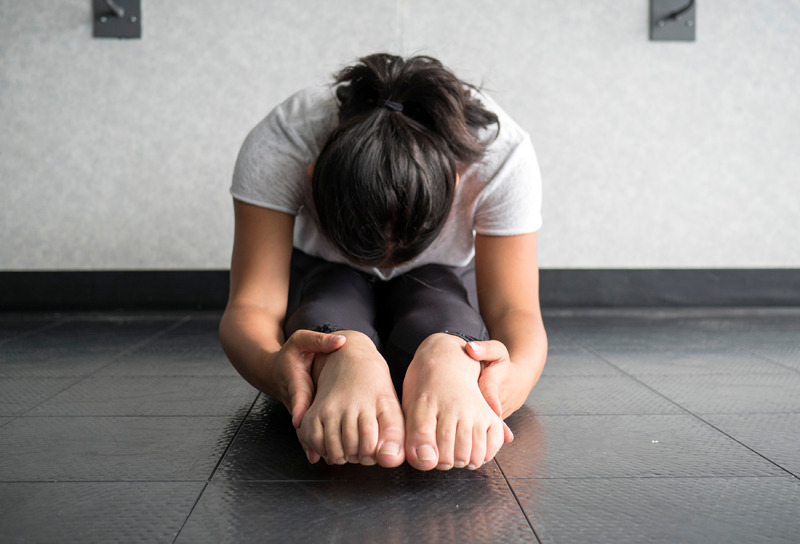
How Yoga and Meditation Can Boost Your Creativity
12th October 2018
How Often Should You Practice Yoga?
19th October 2018What Does a Weekly Yoga Routine Look Like?

If you’re new to the yoga mat, you may find it helpful to plan a weekly yoga routine. While experienced yogis can flit between styles, a set routine can help beginners to perfect the basic poses. For best results, the routine should feature a range of postures to target all areas of your body. To improve the routine further, start off with a mindful breathing exercise such as Ujjayi Breathing. In this article, we explore what a weekly yoga routine should look like.
Ujjayi Breathing
Designed to create heat and stability within the body, Ujjayi breathing is the perfect way to start your routine. Often, this exercise can remind you to take your time with each pose. Like any mindful breathing, Ujjayi can be used to increase the awareness of our breath. Additionally, practising Ujjayi can teach us to use our full lung capacity. Doing this, rather than shallow breathing, will allow a better flow of oxygen to the brain.
To practice Ujjayi, start by inhaling through your nose. As you breathe in, drag the air along the back of your throat to create a gentle hissing sound. If practised correctly, it should feel like you’re sipping a cool drink through a straw. When you’re ready, gently release the breath through your nose. Practice the exercise for around 2 minutes or until your breathing is long and smooth.
Mountain Pose
As the base for all standing postures, Mountain Pose is a great way to start your routine. While it may seem like you’re simply standing, it gives you a sense of how to ground your feet to the mat below you.
To practice this asana, begin standing with your feet together. Press down through your toes as you spread them apart. Tense your quadriceps to lift your kneecaps, then lift yourself up through your inner thighs. As you lift your chest, draw your stomach in and up and press your shoulders down. Bring your shoulder blades together to open your chest, keeping your palms facing inwards. You are in Mountain Pose. Hold the asana for around 30 seconds whilst breathing deeply.
Downward Facing Dog
Used in most yoga classes, Downward Dog stretches the entire body. To practice the asana, begin on all fours with your wrists under your shoulders. With your toes tucked under, lift your hips off the ground and draw them back towards your heels. If your hamstrings feel too tight, keep your knees slightly bent. If you need more length, gently walk your hands forward until the pose feels comfortable. Finally, press your palms into the mat and rotate your elbows towards each other. You are in Downward Facing Dog. Hold the asana for around 8 breaths before returning to your hands and knees.
Plank Pose
This posture teaches us how to use the body to support our balance. Additionally, it can be used to strengthen the abdominal muscles and tone the stomach.
To practice Plank Pose, begin on all fours. Tuck your toes under and lift your legs up off the floor. Slide your feet back until your body forms a straight line from your head to your feet. Finally, engage your abdominals and draw your shoulder blades down and back. You are in Plank Pose. Keep your abdominals engaged to hold the position for as long as possible.

Triangle Pose
Designed to open the lungs, Triangle Pose is great to use in the middle of your routine. Additionally, the asana stretches the sides of the waist and strengthens the legs.
To practice the asana, begin standing with your feet apart. Bring your arms out to the sides until they’re in line with your shoulders. Turn your right foot out 90 degrees and your left foot in 45 degrees. Engaging your quadriceps, bend to the side over your right leg. For support, place your right hand on your ankle, shin, or knee. Finally, lift your left arm towards the ceiling and gaze at your fingertips. You are in Triangle Pose. Hold the asana for 30 seconds before repeating on the opposite side.
Seated Forward Bend
To stretch your hamstrings and back, it’s important to include a forward bend in your routine. Seated Forward Bend is perfect for beginners as it teaches us how to breathe through uncomfortable positions.
To practice the asana, begin seated with your legs together and your hands by your sides. Lift your chest and lower your upper body towards your legs. Engage your abdominals and imagine your stomach moving toward your thighs. You are in Seated Forward Bend. If you can’t bend all the way, don’t panic! As long as you feel a stretch through your upper and lower back, the asana is doing its job.
Bridge Pose
After using a forward bend, try to practice a backbend. As Bridge Pose stretches the front of the body and strengthens the back, it’s ideal to incorporate into your routine.
To practice the asana, lie down on your back and bend your knees. Keeping your feet hip-width apart, press firmly through your feet and lift your back and bottom off the mat. Open the chest by pressing your hands into the ground. You are in Bridge Pose. Hold the asana for 30 seconds before lowering yourself back down to the mat.
Corpse Pose
Designed to calm the body and mind, Corpse Pose is the perfect way to end your routine. To practice the asana, start by lying on your back. Finally, relax your arms by your sides and close your eyes. You are in Corpse Pose. Take this time to concentrate on your breathing or reflect on the rest of your routine.
In Summary
Whether you put on your yoga top once a week, twice a week, or even daily, the routine above will help you to master the basic poses. Including a range of different asanas, the routine is designed to target every area of the body.

